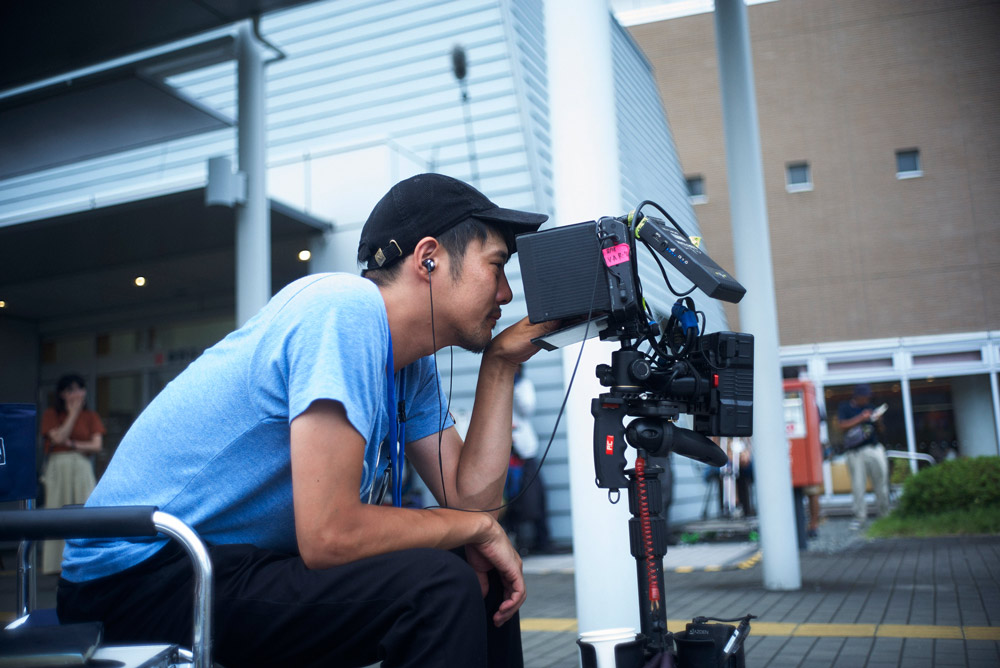![[CINEMORE ACADEMY Vol.3] Pre-production edition How to make the movie “The Brightest Roof in the Universe”](https://cinemore.jp/images/ec05ad1d98dd55aec9310f03563a78741035f515393693eb6d4c7bd65d99efd2.jpg)
[CINEMORE ACADEMY Vol.3] Pre-production edition How to make the movie “The Brightest Roof in the Universe”
“Biuchi” to unify the image among staff
Q: I understand that pre-production is progressing within a really limited amount of time. In such a situation, how does Mr. Fujii try to share his image with the staff and cast?
Fujii: The most important things are "location scouting" and "perfect shots."
In my case, I roughly divide the ``bi-uchi'' process into two times: ``pre-bi-uchi'' and ``main beauty-uchi''.Before that, I personally consult with the costume director, cinematographer, etc. during the day and night. We have a meeting while eating dinner. I try to talk to each staff member beforehand, such as what kind of tone I want this visual to have, what kind of camera I'll use this time, what colors I want the costumes to be, etc.
``Beautiful shots'' can make all the difference, or rather, if you're too fluffy, people will wonder, ``What does the director want to do?'' and the staff won't take action. For example, later on, we might say, ``Due to our budget, we can only prepare this many extras.'' So, when I was already at the stage of perfecting the scenes, I told them, ``I want this many extras for this scene,'' ``I want to shoot this kind of special cut here,'' ``I think this dream scene will be all set, and I'll do it with this kind of image.'' Masu.
For example, in ``The Brightest Roof in the Universe,'' there is an accident scene, and I preemptively say, ``I want to take a bird's-eye view shot while it's raining.'' If you say ``I want to take a photo from above'' on the day of the shoot, they'll say ``I don't have that kind of equipment.''

Q: Fujii-san, you said that you don't draw storyboards for movies, but I think it's extremely difficult to verbalize and convey the visuals that are inside you. How did you develop the ability to verbalize images?
Fujii: When I started out, I didn't have that skill yet. When I started proceeding within the rules of ``this is how images and movies work,'' I really regretted it, or rather I felt frustrated. Because of that trauma, I started trying to verbalize it.
I'm already a young player, so I try to decide everything. You can even decide, ``I don't want to make a decision here.'' I think it's the director's job to say, ``I'm not thinking about it right now,'' when it's something that you won't know until you're on set, but you should still say, ``I haven't decided yet, so please give me your ideas.'' I try to say it clearly so there are no pauses.
Q: This is the same with this work, but what struck me when I encountered Fujii-san's work was the visuals, which once seen are unforgettable. Some people impress with their radical paintings, but Ms. Fujii leaves a lasting impression with her beauty. How is this aesthetic sense honed?
Fujii: After all, I love movies, so I guess it's mostly the works I've come across that I like while watching. Maybe my father took me to movie theaters and art museums a lot, which may have had an influence.
This time, Hiroko and I had similar tastes in movies, so it was clear that we shared a worldview. There was a strong sense of ``a world like a picture book''. You used a painting by Michel Delacroix to share it.
Maeda: When I showed him that picture and said, ``I want to shoot in this kind of place,'' Mr. Mori, the line producer, was silent for about 10 minutes. What should I do?
Q: (laughs).
Problems with the “too busy” Japanese film production environment

